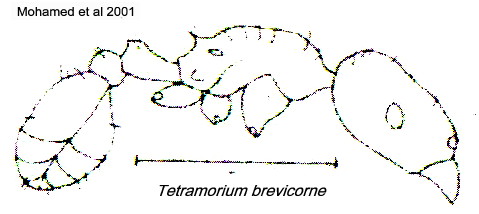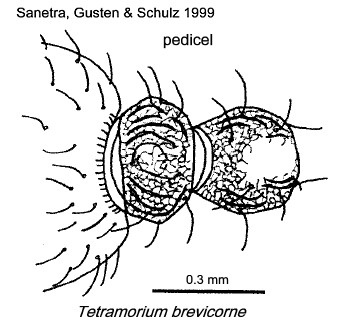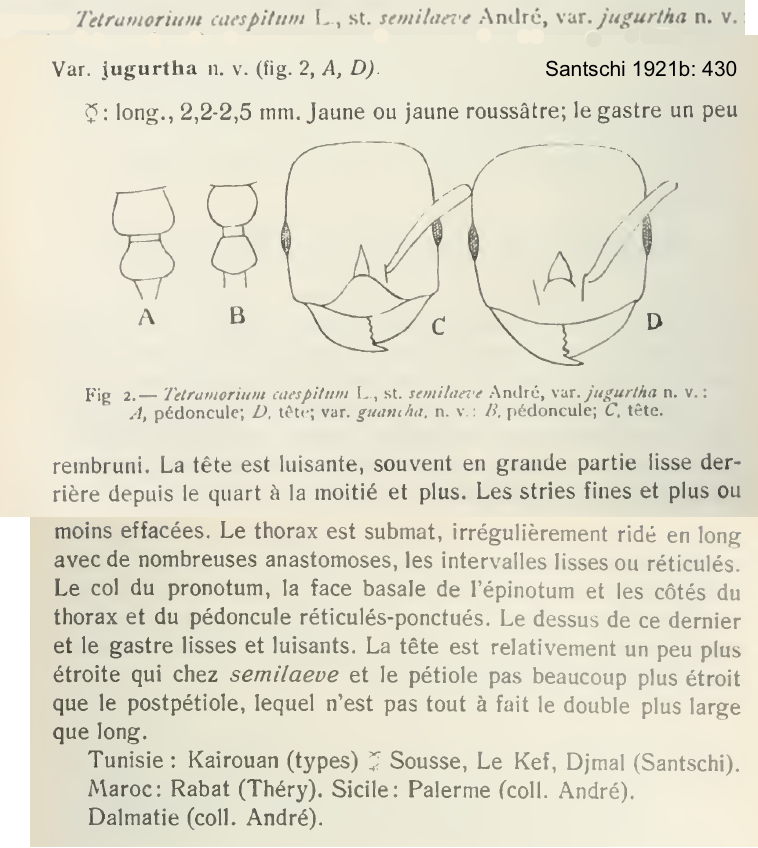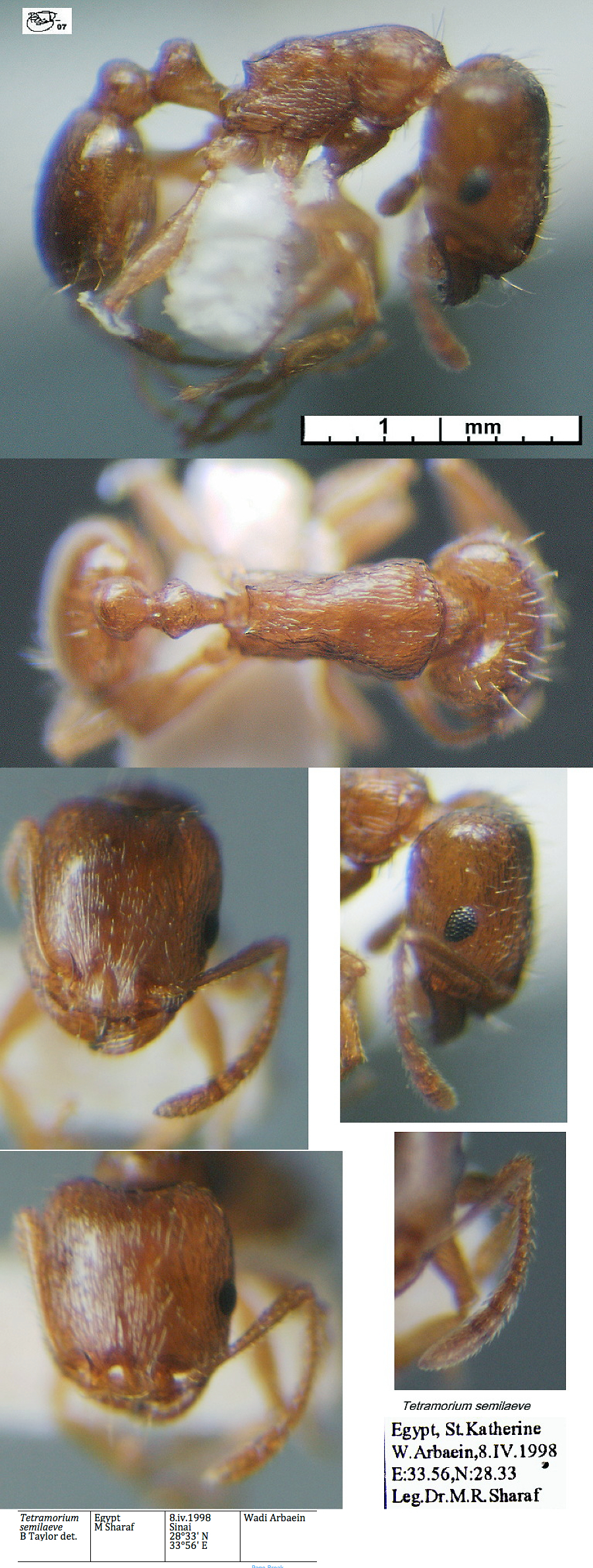| caespitum-group |
Tetramorium semilaeve (André)
  Type location Mediterranean
Region (Tetramorium caespitum var semilaeve, André,
1883a: 286, worker; Emery, 1891b: 2, queen; Forel, 1902a: 148, male;
raised to species first by Dalla Torre, 1893: 134; also Bondroit, 1918:
109) - no type images on Antweb (April 2015). Type location Mediterranean
Region (Tetramorium caespitum var semilaeve, André,
1883a: 286, worker; Emery, 1891b: 2, queen; Forel, 1902a: 148, male;
raised to species first by Dalla Torre, 1893: 134; also Bondroit, 1918:
109) - no type images on Antweb (April 2015).
Bolton (1995: 414) lists numerous subspecies but the
whole situation appears in great need of clear resolution.
|
 André's
(1883a) description is among the "Tetramorium
caespitum" varieties at André's
(1883a) description is among the "Tetramorium
caespitum" varieties at  Bondroit's (1918) note is at Bondroit's (1918) note is at  . .
Egypt records - Mohamed et al (2001,
illustrated);
Sharaf list - Material examined: Wadi El-Talaa, St.Catherine (South
Sinai), 15.xi.1998 (2); Wadi El-Talaa, St.Catherine (South Sinai),
19.ii.1998 (2); Wadi El-Arbaein, St.Catherine (South Sinai), 3.iv.1998
(8) (SHC); Sahab (South Sinai), 14.xi.1998 (1) Leg.M.R.Sharaf (ASUC).
This is somewhat similar to the Sinai specimens
collected by M James and diagnosed by BT as Tetramorium
schmidti but that clearly has more numerous erect hairs on the
alitrunk dorsum and is yellow.
|
 This was earlier diagnosed as Tetramorium
brevicorne by Mohamed et al (2001, illustrated) but the
paper by Sanetra, Güsten & Schulz (1999) shows that to have been an
error. Sanetra et al. found that the scape length is not a reliable
distinction for separating workers from caespitum and the
sculpturation of the petiole nodes was a better characteristic. On brevicorne
the postpetiole has more or less evenly distributed reticulate
microsculpture; on caespitum this is restricted to, at the
most, the more basal part of the node; also the occiput on brevicorne
often has rugosity developed into a conspicuous arched pattern. This was earlier diagnosed as Tetramorium
brevicorne by Mohamed et al (2001, illustrated) but the
paper by Sanetra, Güsten & Schulz (1999) shows that to have been an
error. Sanetra et al. found that the scape length is not a reliable
distinction for separating workers from caespitum and the
sculpturation of the petiole nodes was a better characteristic. On brevicorne
the postpetiole has more or less evenly distributed reticulate
microsculpture; on caespitum this is restricted to, at the
most, the more basal part of the node; also the occiput on brevicorne
often has rugosity developed into a conspicuous arched pattern.
|
 The photomontage
of
the jugurtha type worker
is collated from http://www.antweb.org/specimen.do?name=casent0915050. The photomontage
of
the jugurtha type worker
is collated from http://www.antweb.org/specimen.do?name=casent0915050.
Described as Tetramorium
caespitum L. stirps semilaeve
Andre var. jugurtha n.v. by
Santschi 1921b: 430 (see below); as Tetramorium
semilaeve var. jugurtha
Sants. by Menozzi, 1934: 162;
type location Tunisia. Menozzi noted it as found all along the
Mediterranean coast of Africa.
|

|
Oxford University Museum
specimens
Tetramorium semilaeve
B Taylor det.
|
Egypt
M Sharaf
|
8.iv.1998
Sinai
28°33' N
33°56' E
|
Wadi Arbaein
|
1
|
 |
|
 The
photomontage is of a worker from among those listed above as
collected by Mostafa Sharaf. Note the wholly smooth petiole and
postpetiole, whereas the head and dorsal alitrunk are finely but weakly
striate; very similar to the jugurtha shown above. The
photomontage is of a worker from among those listed above as
collected by Mostafa Sharaf. Note the wholly smooth petiole and
postpetiole, whereas the head and dorsal alitrunk are finely but weakly
striate; very similar to the jugurtha shown above.
|
|